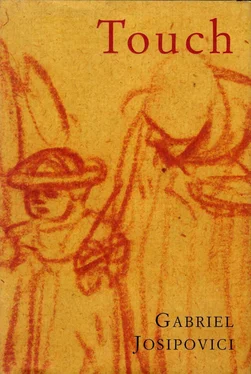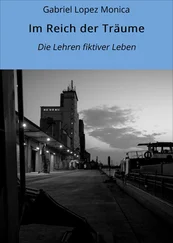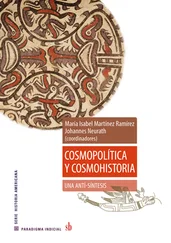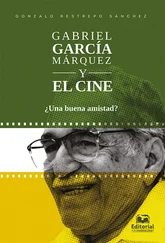Gabriel Josipovici - Touch
Здесь есть возможность читать онлайн «Gabriel Josipovici - Touch» весь текст электронной книги совершенно бесплатно (целиком полную версию без сокращений). В некоторых случаях можно слушать аудио, скачать через торрент в формате fb2 и присутствует краткое содержание. Год выпуска: 1996, ISBN: 1996, Издательство: Yale University Press, Жанр: Современная проза, на английском языке. Описание произведения, (предисловие) а так же отзывы посетителей доступны на портале библиотеки ЛибКат.
- Название:Touch
- Автор:
- Издательство:Yale University Press
- Жанр:
- Год:1996
- ISBN:0300066902
- Рейтинг книги:5 / 5. Голосов: 1
-
Избранное:Добавить в избранное
- Отзывы:
-
Ваша оценка:
- 100
- 1
- 2
- 3
- 4
- 5
Touch: краткое содержание, описание и аннотация
Предлагаем к чтению аннотацию, описание, краткое содержание или предисловие (зависит от того, что написал сам автор книги «Touch»). Если вы не нашли необходимую информацию о книге — напишите в комментариях, мы постараемся отыскать её.
Touch — читать онлайн бесплатно полную книгу (весь текст) целиком
Ниже представлен текст книги, разбитый по страницам. Система сохранения места последней прочитанной страницы, позволяет с удобством читать онлайн бесплатно книгу «Touch», без необходимости каждый раз заново искать на чём Вы остановились. Поставьте закладку, и сможете в любой момент перейти на страницу, на которой закончили чтение.
Интервал:
Закладка:
Andrew Graham-Dixon has recently written of The Jewish Bride :
2. ( right ) Alexei Rabinovitch and Nelly Rossi, Cairo 1907.
3. ( facing page ) Rembrandt, The Jewish Bride, c. 1666. (Rijksmuseum, Amsterdam)
It is one of the great paintings of love, of unaffected tenderness, in Western art. It is not idealised or dramatised. Rembrandt's figures do not adopt the stock theatrical postures of the amorous in art. Love, here, expresses itself through the subtlest language of face and body; through expressions that seem charged with emotion and, also, a peculiar sense of momentousness, as if the issue of this union might be as much a cause for apprehension as celebration; through the inclination of the man's body, its slight but immensely affectionate lean from the vertical; through the contact of his hand with the woman's, and the lightness of that contact, so skilfully (and inexplicably) expressed in paint.
That seems exactly right, and if the photo is inevitably less charged, if the faces of the bride and groom seem perhaps even slightly bland, slightly lacking in expressiveness, that is only the difference between photography and paint; not just the difference between the anonymous photographer and Rembrandt but also our different reactions to being photographed and painted, the way we freeze a little to try instinctively to protect ourselves from a photographer, whose act, however well we know him, is always felt as predatory. But in both images touch is at once absolutely natural and, as Graham-Dixon says, momentous. It establishes distance as much as closeness. It shows the relation between the public and the private spheres, between irreducible singularity and the commitment to another. For both couples are anything but starry-eyed. Both seem to see clearly the vicissitudes that lie ahead. But touch is, in both instances, the index of their confidence and trust. Touch establishes the boundaries of each and their dependence on each other, neither perpetual solitude nor perpetual merging but an acceptance of difference in their free decision to make their lives together.
18 First Steps
It was just at the time when newly married couples throughout the western world were having their photographs taken in postures and clothing similar to those of my grandparents that we entered the period that has aptly been called the Age of Suspicion. For the one thing that seems to unite all the greatest artists and thinkers of the later nineteenth century — Marx, Kierkegaard, Dostoevsky, Flaubert, Nietzsche — and of the twentieth — Proust, Wittgenstein, Kafka, Freud, Eliot, Picasso, Schoenberg — was their suspicion of the notions they had inherited from the Enlightenment and Romanticism — Progress, Reason, Imagination, Art, Glory, Human Nature, etc. — and their desire to strip away false façades and lay bare the needs and motives that had given rise to them.
Yet, among the artists at least, this desire went hand in hand with a profound sense that the ethos of suspicion was always in danger of sweeping away the precious and genuine along with the false and the shoddy, with an awareness, largely instinctive, that if our relation to the world is to be one of unwavering suspicion then we will have wounded ourselves more deeply than we realise. Van Gogh, quite as iconoclastic as Nietzsche in his way, could nevertheless write to his brother about ‘what only Rembrandt has among painters, that tenderness in the gaze … that heart-broken tenderness, that glimpse of a superhuman infinite that there seems so natural’. Unmasking the sentimental, the hypocritical, the oppressive, the shoddy, can, indeed must, co-exist with a recognition of the true and the genuine.
Picasso, less romantic than van Gogh but equally responsive to those aspects of our lives that call for celebration as well as those which need to be unmasked, has left us a whole series of icons of trust, particularly that which exists between mother and child, at the same time as he wittily undermines the pretensions and bad faith that so often underlie nineteenth-century depictions of this theme. Two pieces of sculpture in particular come to mind. One of them is so famous that it is now difficult for us to read it. In Vallauris in 1952 the seventy-year-old artist found a toy car which, in a flash of inspiration, he saw as the broad-nosed face of a monkey. The finished sculpture, however, provides us with more than the simple play of wit embodied in that perception. For it is an image not of a car/monkey but of a mother and child. The tiny baby monkey, clinging to the mother's massive chest, completely alters the meaning of the car/face above it. Quite as much as any madonna and child, what the sculpture suggests is the child's need for dependence and the mother's tenderness, clumsiness and pride. Had this been a work of Duchamp's none of this would have emerged. Duchamp would have made the connection between car and monkey-face and been satisfied to embody that flash of wit. Indeed, he would probably have felt that anything more would destroy the purity of the initial conception. For Picasso, on the other hand, the flash of wit — this car, seen from above, is the face of a monkey — is only the beginning.
Two years earlier he had welded together another piece of sculpture made from found objects. This too is a mother and child, but the tall, stately mother is pushing a pram this time, in which sits a tiny infant. The mother's hands just touch the enormously elongated handle of the pram, her head on its long neck looks up and out, but again the piece is much more than a playful tour de force : a spark flies between the child in the pram and the mother standing proudly above it, a spark which elicits sympathy and understanding from us, however ‘unrealistic’ the mother and child may be. As always with Picasso the technical skill and witty insight are not there for their own sakes or even to make a general point about perception or art, but for the sake of the human content.
4. ( right ) Pablo Picasso, Mother and Child , 1952. (Musée Picasso, Paris. Photo © RMN. © Succession Picasso/DACS, 1996)
5. ( below ) Pablo Picasso, Mother with Pushchair , 1950. (Musée Picasso, Paris. Photo © RMN. © Succession Picasso/DACS, 1996)
6. ( left ) Pablo Picasso, First Steps , 1943. (Yale University Art Gallery, New Haven; gift of Stephen C. Clark B.A. 1903. © Succession Picasso/DACS 1996)
7. ( below ) Rembrandt, Two Women Teaching a Child to Walk, c . 1635–7. (British Museum)
There is nothing in the least witty, though, about the 1943 painting, First Steps , in which a grossly distorted mother, bending over an equally distorted infant and holding both his hands, is helping him to learn to walk. Hockney once remarked, apropos of this painting, that even great artists rarely add to the repertoire of motifs that have dominated the western painting tradition, but that here Picasso does just that. The theme of the child's first steps is after all a universal one, since the moment the child discovers he can walk on his own is one of the key moments in every human life — yet how often, asks Hockney, has it been portrayed in art? (I can't believe he did not know that among the drawings by Rembrandt owned by the British Museum is one, dated 1635–7, which shows two women teaching a funny upright little child to walk, and one, dating from the 1650s, which shows a mother similarly engaged with her child. Yet his point of course still holds: the iconography of first steps is an extremely rare one in art.)
Here, in the Picasso, the post-Cubist distortions convey, in a manner figurative realism never could, the mother's love and concern, her hopes and fears, and the child's equally powerful mixture of terror and excitement. She thinks of nothing but him and his well-being, he thinks of nothing but his body and the freedom that beckons. She is about to let go the two hands she holds in hers, while the absurdly enlarged feet of the child are already on their way to freedom, the left raised so that we see the toes and most of the sole from below. A miracle no less great than that of the Resurrection is about to occur, the miracle that takes place in every human life when we are forced to let go and find that we can actually make it on our own, when we reconcile ourselves to letting go and find that those we have nurtured can actually make it on their own. Trusting that her hands will hold him should he stumble, the child discovers that he can retain his balance, that his legs will hold him upright and that he is no longer attached to his mother; trusting that his feet and legs will carry him, the mother lets him go with a mixture of pride — look at what he can do! — and sorrow — this is an index of things to come.
Читать дальшеИнтервал:
Закладка:
Похожие книги на «Touch»
Представляем Вашему вниманию похожие книги на «Touch» списком для выбора. Мы отобрали схожую по названию и смыслу литературу в надежде предоставить читателям больше вариантов отыскать новые, интересные, ещё непрочитанные произведения.
Обсуждение, отзывы о книге «Touch» и просто собственные мнения читателей. Оставьте ваши комментарии, напишите, что Вы думаете о произведении, его смысле или главных героях. Укажите что конкретно понравилось, а что нет, и почему Вы так считаете.












